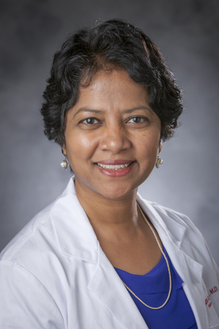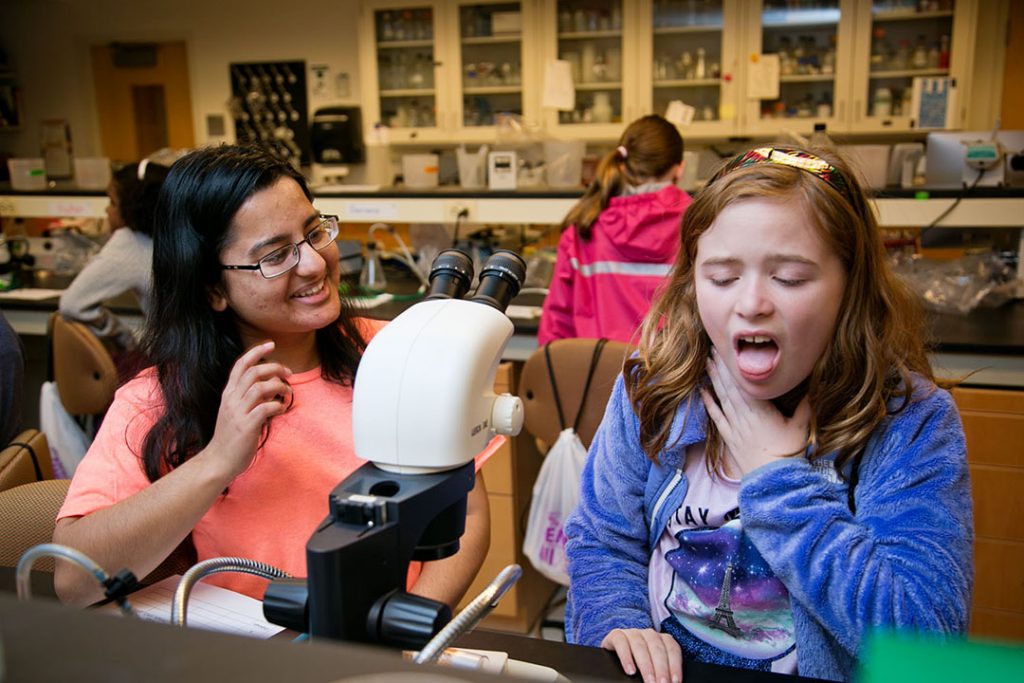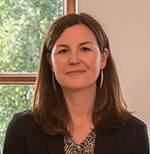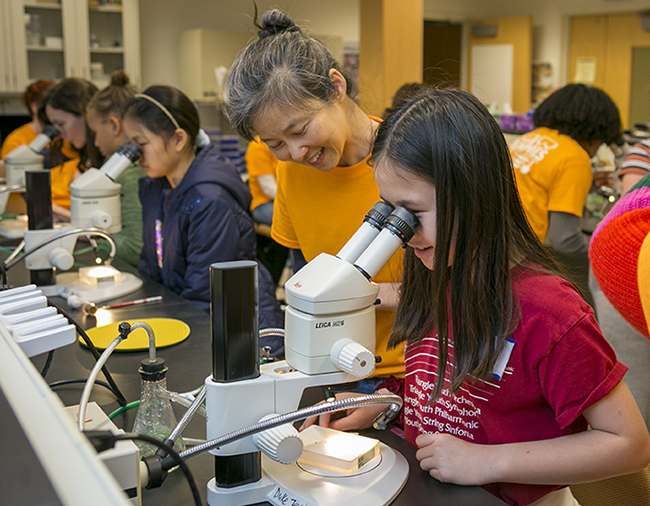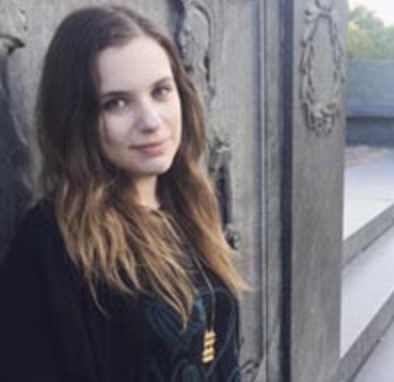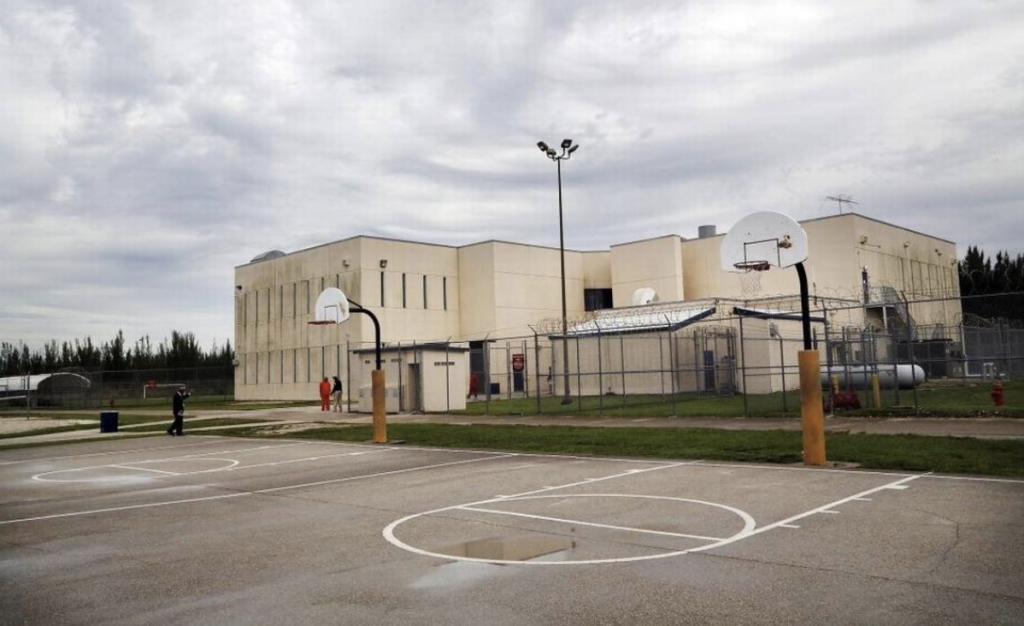When asked about the process of writing her memoir, Dana Lorene Creighton paused in thought.
“It’s like spilling your guts to a lined composition notebook,” she said.
On Tuesday, March 30th, Creighton was joined by Dr. Sneha Mantri, her neurologist at Duke and director of the Trent Center’s Program in Medical Humanities, for Narrative Medicine: A Patient’s Perspective – a conversation about the impact of narrative medicine and the journey to her memoir, A Family Disease: A Memoir of Multigenerational Ataxia.

Creighton, who has an MS in exercise physiology and has spent her career involved in clinical research and community health at both UNC-Chapel Hill and Duke, has spinocerebellar ataxia, a hereditary neurodegenerative condition characterized by a lack of muscle coordination. The illness is commonly visible through slurred speech, stumbling, falling, and incoordination due to damage to the cerebellum – the part of the brain that controls muscle coordination.
As Creighton described, prior to writing her book in her late forties, she hadn’t successfully communicated to anyone the impact of ataxia on her life. And so, her memoir was organically born, but as Creighton says, “it was hard for me to type as fast as I was thinking, and that lasted for several months.”
It took Creighton a couple of years just to write the foundation of the book, which draws on neuroplasticity research, personal memories, and medical records to highlight the importance of storytelling in deriving meaning from illness. She spent the next two years after that re-shaping the arc, drawing on a wealth of her own experiences as well as decades of journaling that had left her with a meticulous set of notes.
As both Creighton and Dr. Mantri emphasized, writing is a deeply cathartic exercise as well as a way to share significant personal narratives. This is especially true in a field such as medicine, where people are so often treated as an illness or statistic rather than a human being.
Narrative medicine was coined as a term by Dr. Rita Charon in her book Narrative Medicine: Honoring the Stories of Illness, to refer to “medicine practiced with the narrative skills of recognizing, absorbing, interpreting, and being moved by the stories of illness . . . . Along with their scientific expertise, doctors need the expertise to listen to their patients, to understand as best they can the ordeals of illness, to honor the meanings of their patients’ narratives of illness, and to be moved by what they behold so that they can act on their patients’ behalf.”
While the recognition of patient and doctor narratives has been around for many years, it was not until fairly recently that narrative medicine emerged as a field of knowledge that doctors could educate themselves in.
Dr. Mantri is familiar with the benefits of narrative medicine from a clinical perspective, holding an M.S in Narrative Medicine from Columbia University and being a leader of various narrative medicine initiatives at Duke, both with doctors and medical students.
According to Dr. Mantri, elucidating these narratives is crucial to understanding that at the end of the day, doctors and patients work to navigate challenges of illnesses with different perspectives. It’s necessary to hear the story of a patient as well as understand the story of a clinician. Only then can doctors work to find moments of alignment between these two perspectives, resulting in care that is more patient-centered.
From the patient perspective, Creighton remarks that a chapter in her book delves into narrative medicine, even though at the time she had no idea what it was. As she learned more about the field, though, it became clear just how integral narrative medicine was to her experience processing and coming to terms with her ataxia. Prior to taking a class on narrative medicine, she assumed that it wouldn’t be a positive experience. But years later, she credits the process of writing her memoir with allowing her to move on, in many ways, from the hold her illness had on her.
Creighton also pointed out that as humans, “we want the same things – to feel heard and to make meaningful connections with others who can potentially help us navigate whatever condition we’re going through.”
To that end, Dr. Mantri and Creighton both referred to several resources that can help people with illnesses find communities of other individuals with the same illness, in order to find the type of solidarity and understanding promoted by sharing experiences. One such resource is PatientsLikeMe, where individuals can ask questions and exchange tips on their specific illness with others going through similar struggles.

Finally, Creighton was asked about the things she’d like clinicians to know from her perspective as a patient. She described the disconnect that she had often felt, not only with doctors but with therapists and counselors, stemming from a feeling that the help she was offered often did not meet her where she was. In brainstorming ways to mitigate this gap, both Dr. Mantri and Creighton pointed to a need for doctors to focus on a patients’ needs and desires, and a need for patients to advocate for themselves.
As the conversation concluded, Creighton emphasized the importance of being seen as a human rather than a victim of a disease. Spinocerebellar ataxia is neurodegenerative, meaning that symptoms progressively get worse. But as Creighton remarked: “Losing my abilities is going to happen. Losing my abilities doesn’t change the human that I am.”

Post by Meghna Datta




